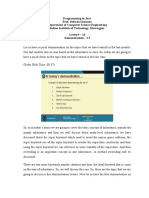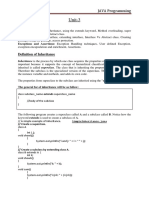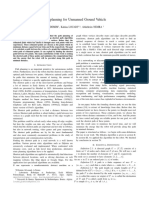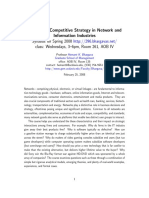0% found this document useful (0 votes)
7 views6 pagesJava Research 2
The document explains the relationship between Box and BoxWeight classes in object-oriented programming, emphasizing that a superclass reference can only access members defined by the superclass. It introduces the 'super' keyword, which allows subclasses to call superclass constructors and access hidden members, thereby promoting encapsulation. The document also illustrates how to efficiently implement constructors in subclasses without duplicating code from the superclass.
Uploaded by
Asim DindaCopyright
© © All Rights Reserved
We take content rights seriously. If you suspect this is your content, claim it here.
Available Formats
Download as PDF, TXT or read online on Scribd
0% found this document useful (0 votes)
7 views6 pagesJava Research 2
The document explains the relationship between Box and BoxWeight classes in object-oriented programming, emphasizing that a superclass reference can only access members defined by the superclass. It introduces the 'super' keyword, which allows subclasses to call superclass constructors and access hidden members, thereby promoting encapsulation. The document also illustrates how to efficiently implement constructors in subclasses without duplicating code from the superclass.
Uploaded by
Asim DindaCopyright
© © All Rights Reserved
We take content rights seriously. If you suspect this is your content, claim it here.
Available Formats
Download as PDF, TXT or read online on Scribd
/ 6























































































